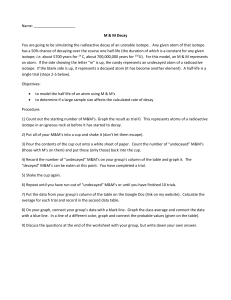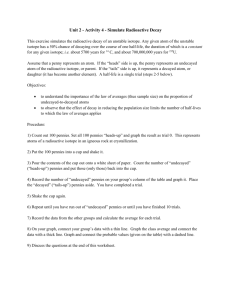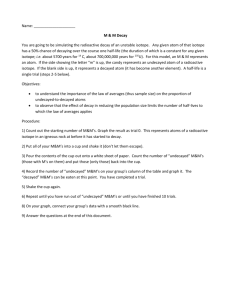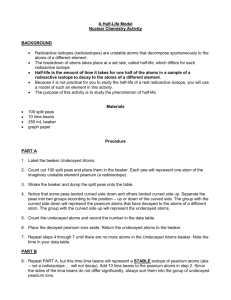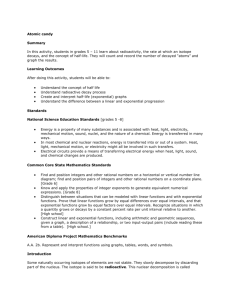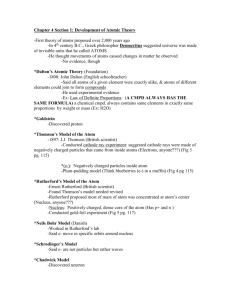Handout for `M & M Decay`
advertisement
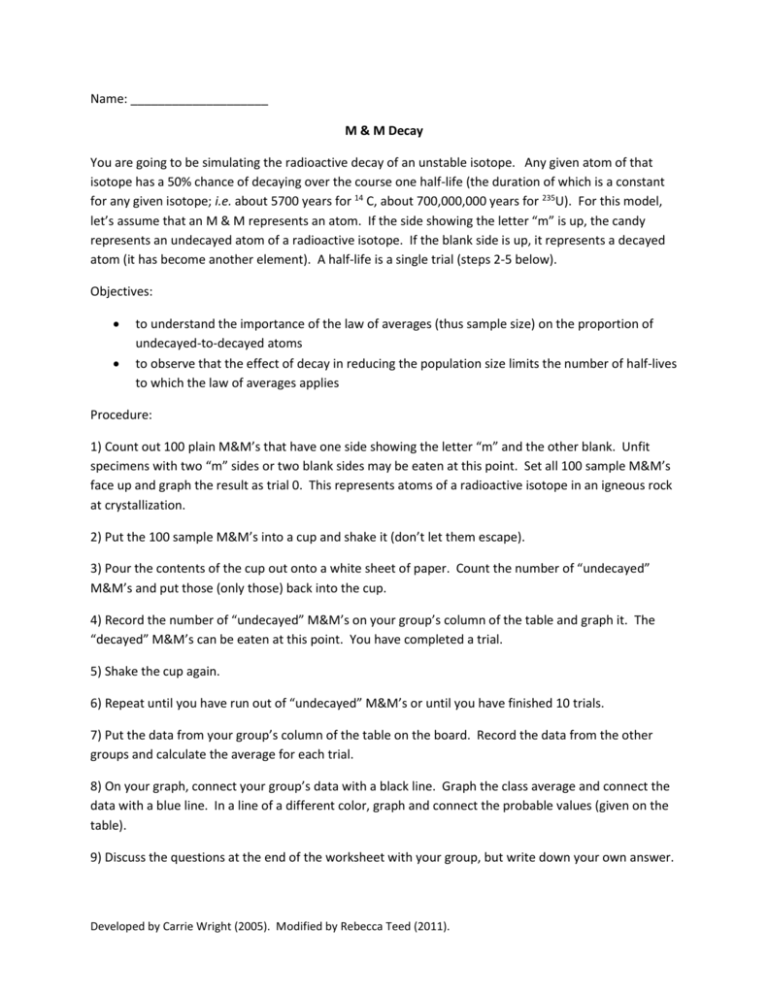
Name: ____________________ M & M Decay You are going to be simulating the radioactive decay of an unstable isotope. Any given atom of that isotope has a 50% chance of decaying over the course one half-life (the duration of which is a constant for any given isotope; i.e. about 5700 years for 14 C, about 700,000,000 years for 235U). For this model, let’s assume that an M & M represents an atom. If the side showing the letter “m” is up, the candy represents an undecayed atom of a radioactive isotope. If the blank side is up, it represents a decayed atom (it has become another element). A half-life is a single trial (steps 2-5 below). Objectives: to understand the importance of the law of averages (thus sample size) on the proportion of undecayed-to-decayed atoms to observe that the effect of decay in reducing the population size limits the number of half-lives to which the law of averages applies Procedure: 1) Count out 100 plain M&M’s that have one side showing the letter “m” and the other blank. Unfit specimens with two “m” sides or two blank sides may be eaten at this point. Set all 100 sample M&M’s face up and graph the result as trial 0. This represents atoms of a radioactive isotope in an igneous rock at crystallization. 2) Put the 100 sample M&M’s into a cup and shake it (don’t let them escape). 3) Pour the contents of the cup out onto a white sheet of paper. Count the number of “undecayed” M&M’s and put those (only those) back into the cup. 4) Record the number of “undecayed” M&M’s on your group’s column of the table and graph it. The “decayed” M&M’s can be eaten at this point. You have completed a trial. 5) Shake the cup again. 6) Repeat until you have run out of “undecayed” M&M’s or until you have finished 10 trials. 7) Put the data from your group’s column of the table on the board. Record the data from the other groups and calculate the average for each trial. 8) On your graph, connect your group’s data with a black line. Graph the class average and connect the data with a blue line. In a line of a different color, graph and connect the probable values (given on the table). 9) Discuss the questions at the end of the worksheet with your group, but write down your own answer. Developed by Carrie Wright (2005). Modified by Rebecca Teed (2011). Class Data Table: Run Group 0 1 2 3 4 5 6 7 8 9 10 Group 100 Group 100 Group 100 Group 100 Group 100 Class Class Probable Total Average Value 100 100 100 100 50 25 12.5 6.25 3.125 1.56 0.78 0.39 0.19 0.098 Data Graph: M & M data # of Parent-isotope Atoms Left (M-up candies) 100 80 60 40 20 0 0 1 2 3 4 5 6 # of Half-lives (Trials) Discussion Questions: 1) Why didn’t each group get the same results? Developed by Carrie Wright (2005). Modified by Rebecca Teed (2011). 7 8 9 10 2) What do the probable values represent? 3) Is there anything improbable about the probable values, whether as applied to M&M’s or to atoms? 4) Which line, the class average or your group’s results, most resembles those of the probable values? Why? 5) Do the earlier or later average trials of your class data most resemble the probable values? Why? 6) For how many half-lives do real or simulated atoms behave like probabilistic values? What are the implications for radiocarbon-dating and uranium-dating? 7) Why don’t we use radiocarbon dating for dinosaur bones? Developed by Carrie Wright (2005). Modified by Rebecca Teed (2011).
